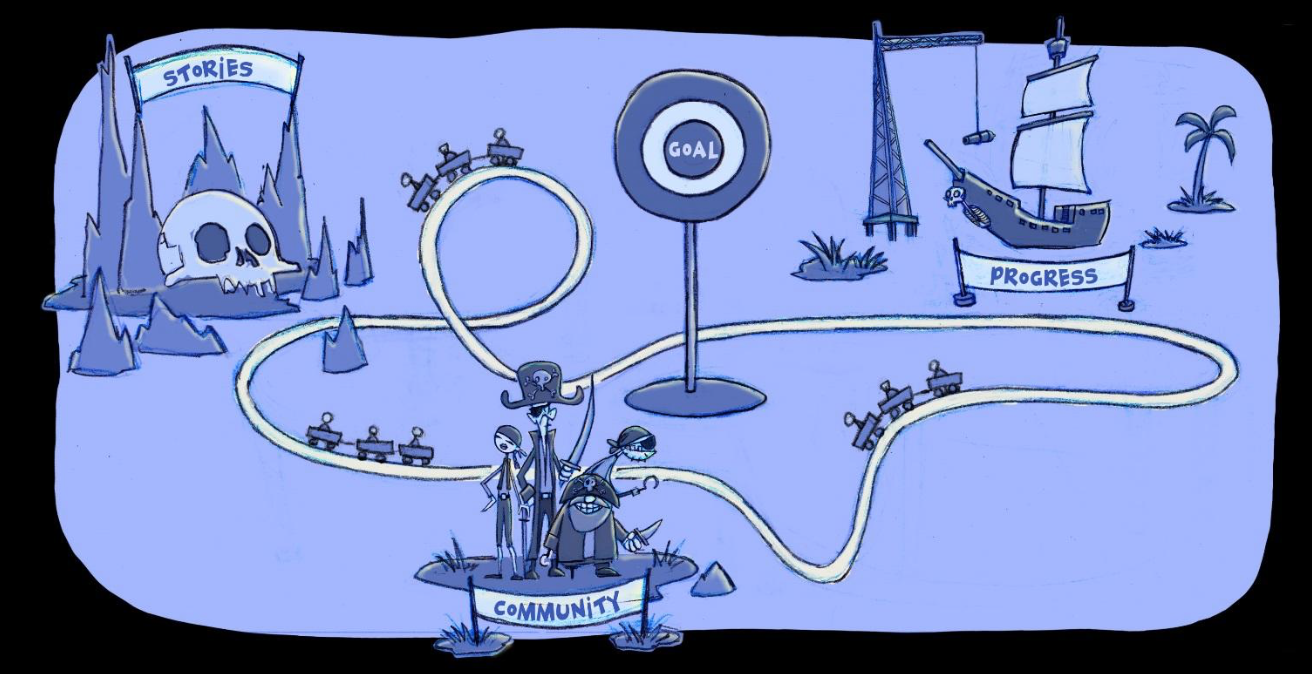By Felipe Lara – Instructor, New York Film Academy Game Design
What is a successful game?
Defining game success in terms of profits is the easiest and simplest route: we can easily say that if game profits are higher than our investment, the game is successful. However, this view does not help us understand how to make a successful game, what ingredients to use and what processes to follow. Profitability depends on your game’s business model, which can vary widely from a free-to-play casual game to a premium VR experience. And in some cases, success might not even be about profit, but about teaching something or about creating a change in behavior — like in the case of many educational games.
If you are trying to make a “successful” game it is much more useful to define success in terms of player engagement. In most cases, there is a strong correlation between player long-term engagement and profitability. But if you understand more clearly how player engagement works, you can map the engagement sequence to the ingredients you need to add to your game and the decisions you need to make during game development.
What Does a Successful Game Look Like In Terms of Player Engagement?

A successful game needs to do 4 things in a sequential order:
- STAND OUT: First, the game needs to stand out. If nobody is aware of your game, nobody will play it. Standing out is about the first impression. The challenge is finding a balance between familiarity and novelty, offering something the player understands but that is different enough from all the other apps to stand out.
- CONNECT: Second, the game needs to connect with players and make them interested in finding out more. Somebody yelling in the middle of the street will get noticed, but the act of yelling itself won’t get people interested; people will only respond if they connect or resonate with what they hear. The same happens with games that get your attention in the app store or in the first couple of minutes of free-to-play game.
- ENGAGE: Third, the game needs to engage players and keep them playing for a while. In most cases, the longer players stick around the more profitable the game is: this gives you more chances to monetize, more chances to get subscriptions, more chances to get recommended to friends, etc.
- GROW: Finally, the game needs to find a way to scale or grow its player base. The best way to do that is by keeping your existing players, and adding features that make them want to invite their friends and promote your game.
Knowing that you need your game to go through the sequence above will help you choose the right ingredients to fulfill each of the steps. For example, one of the best ingredients for standing out in the crowd is having unique art; and one of the best ingredients for growing your game organically is by adding social mechanics that form a community around your game. There are in fact a few key ingredients that can be combined to fulfill the sequence above and create long-term engagement.
But First Clarify the Why and the Who
Your Goals
Of course, none of the previous stuff matters if you are not reaching the goals you were trying to achieve with your game in the first place. You might be attracting players and keeping them around, but if you are trying to make an educational game and your game fails to educate, you are not succeeding even if you have tons of players sticking around. The same goes about monetization: if you have hundreds of thousands of players but you are not monetizing or reaching the profit you were looking to make, you are failing. You need to make sure that as your game connects and engages it is also teaching and/or monetizing. That is a big part of the trick, but for now let’s stick to the basics: you need to have a very clear idea of what are your goals and make sure that everything revolves around that.
Your Target Players
Just as important is to have a clear idea of your target player. The things that I need to do to stand out and connect to kids are very different from the things I need to do to stand out and connect to young adults. One of the main mistakes I’ve seen in my years developing games is trying to make something that is appealing to everybody, or to a very wide range of people. Trying to please all usually ends with not really pleasing or connecting with anyone.
Conclusion

A good first step towards creating a successful game or a successful VR experience is defining how it looks in terms of player engagement. Player engagement usually follows a specific path with specific steps: stand out and be noticed by your target audience, connect with them, engage them to continue playing for a while, and finally make them want to share your game with their friends so they stick around and help you grow.
Once you have a clear idea of what the game needs to do, you can look for the right combination of ingredients — art, game mechanics, story, and community building — that can take the players through the engagement sequence. In another article I will talk more about how these ingredients relate to the engagement sequence.
Ready to learn more about game and VR experiences? Check out NYFA’s VR and Game Design programs.

